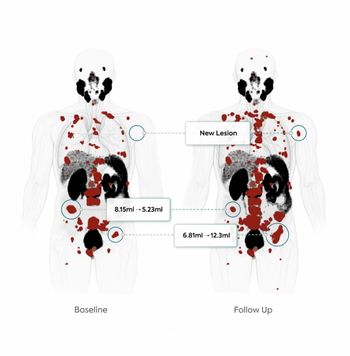
Can Explainable AI Enhance Diagnosis and PI-RADS Classification of Prostate Cancer on MRI?
In a study of over 1,200 men with over 3,200 prostatic lesions, an explainable artificial intelligence (AI) model demonstrated a sensitivity rate of 93 percent for detecting clinically significant prostate cancer.
Emerging research suggests that a model of explainable artificial intelligence (XAI) may offer significant adjunctive benefit for diagnosing prostate cancer on biparametric magnetic resonance imaging (MRI).
For the retrospective study, recently published in
Internal and external test sets revealed area under the receiver operating characteristic curves (AUCs) of 89 percent and 87 percent, respectively, for XAI’s detection of clinically significant
“Expert readers confirmed that the XAI model correctly identified and interpreted the PI-RADS features at biparametric MRI, suggesting that established standardized reporting protocols can act as a common language for the communication between human readers and artificial intelligence tools,” wrote study co-author Tobias Penzkofer, M.D., who is affiliated with the Department of Radiology at Charite-Universitatsmedizin Berlin in Germany. and colleagues. “Besides facilitating decision-making in ambiguous cases, the visual feedback of the PI-RADS feature-based XAI may further help identify obvious misclassifications of the deep learning systems.”
(Editor’s note: For related content, see “
Noting frequently high inter-reader variability with PI-RADS 3 lesions, the study authors pointed out that XAI-assisted interpretation led to an 18 percent increase in accuracy, a 38 percent increase in sensitivity and a 58-second reduction in reading time for the assessment of PI-RADS 3 lesions by non-expert readers.
“Those findings suggest that the developed XAI could provide reliable support to centers with less experienced readers. Additionally, the XAI appears to compensate the previously observed loss of diagnostic confidence and accuracy in biparametric MRI due to the omission of contrast-enhanced sequences. This would substantially shorten imaging time and prevent potential complications following contrast agent administration,” emphasized Penzkofer and colleagues.
In an
“It is conceivable that abbreviated MRI protocols may either replace or at the least complement laboratory biomarker testing for prostate-specific antigens as a key screening tool in the near future. Clinical volumes of prostate MRI will continue to grow,” maintained Dr. Chapiro, an assistant professor in radiology, hepatology, and biomedical engineering at the Yale University School of Medicine.
In regard to study limitations, the authors conceded the retrospective training set for the XAI model came from one MRI vendor (Siemens Medical Systems). Noting that the cohort included patients with a high prevalence of clinically significant prostate cancer, Penzkofer and colleagues suggested that future research involving a lower prevalence of clinically significant prostate cancer may provide additional validation of the XAI model’s clinical applicability.
Newsletter
Stay at the forefront of radiology with the Diagnostic Imaging newsletter, delivering the latest news, clinical insights, and imaging advancements for today’s radiologists.




























